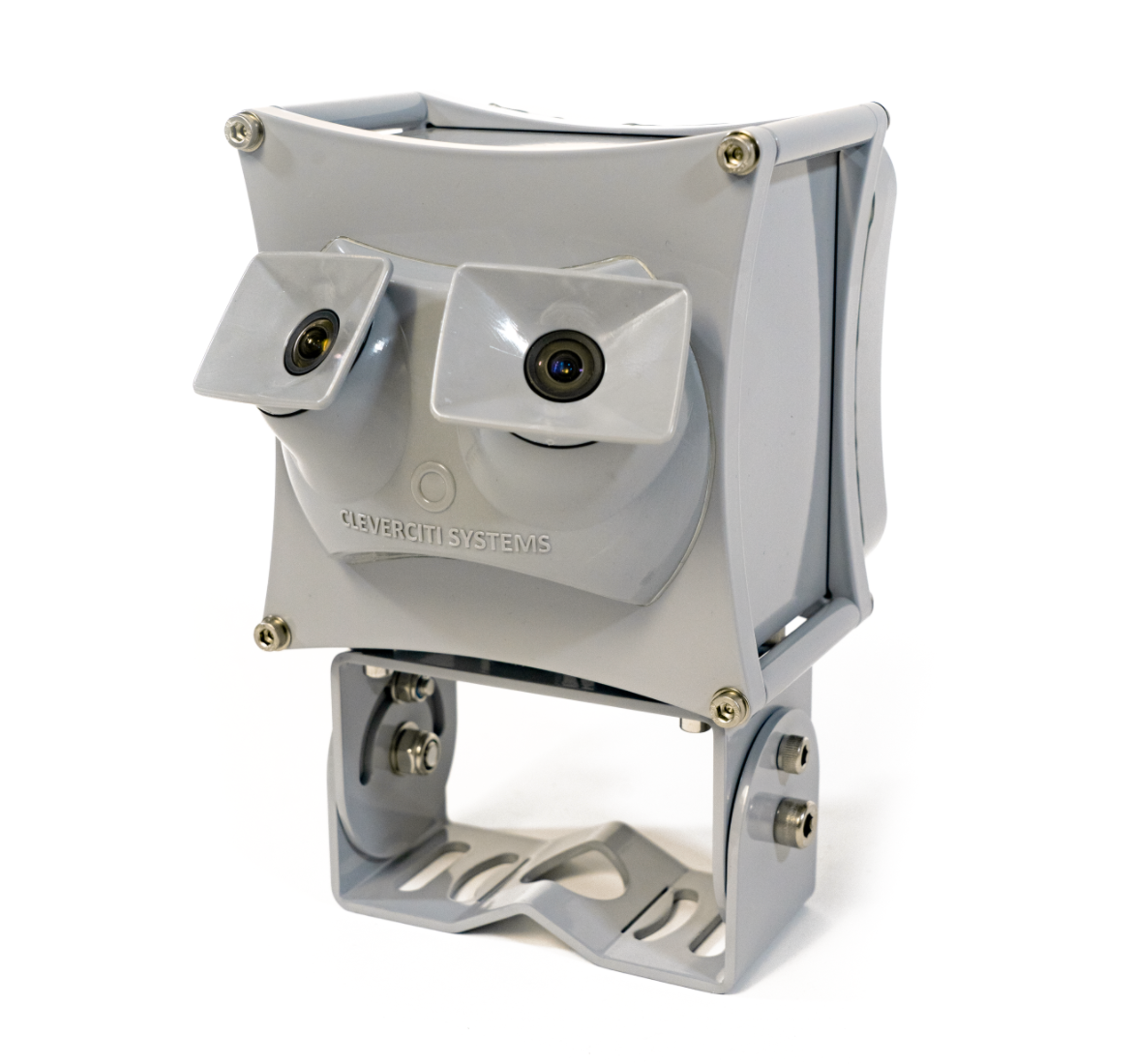cleverciti Sensor
Cutting-edge technology for clever parking
The Cleverciti Sensor can cover up to 100 parking spaces and can be easily installed on existing infrastructure, such as lampposts, buildings or masts. With a range of up to 220 degrees, the sensors measure the exact GPS position and size of open parking spaces.
Purpose-built for parking operations, the sensors are fully compliant with privacy regulations—all image processing occurs ‘at the edge’ and only metadata leaves the sensors.
Comprehensive parking data
Cleverciti’s Sensors are the only smart parking sensors that harness the power of sophisticated edge computing, artificial intelligence, and deep learning to accurately identify parking space occupancy. Cleverciti’s global sensor network uses deep learning to enable each sensor to learn from the others, ensuring peak performance.
Benefits of the Cleverciti Sensor
Hassle-free installation
While legacy in-ground sensors require expensive civil works, Cleverciti Sensors can easily be mounted on existing infrastructure. Installing them on lampposts, buildings or masts allows for quick and low-cost deployment.
parking spaces analyzed by one Sensor.
Maximizing occupancy
Many modern parking environments have unmarked spaces to maximize occupancy. Cleverciti Sensors precisely measure the available space between parked cars to determine if an available space exists—no markings required.
Plug-and-play architecture
Cleverciti Sensors are designed in a way so that they can easily be relocated as needs change.
Want to see the Sensor in action?
Get a demo of the Cleverciti Sensor now
Compliance with privacy regulations
All image processing occurs ‘at the edge’ and only metadata leaves the sensors. As a German company that designs and manufactures its own sensors, Cleverciti has designed its entire solution in consideration of Germany’s strict privacy rules. Sensors have been deployed in over 20 countries globally and always found to be compliant with all privacy regulations.
Want more specs?
Get the Cleverciti Sensor Datasheet now.
Cleverciti Sensor FAQs
How does edge computing work with the Cleverciti Sensor?
The processing of the data generated by the sensor occurs within the sensor itself, meaning that only metadata leaves the sensor. This not only minimizes bandwidth costs but also ensures that the smart parking system is fully compliant with privacy regulations.
Why are overhead parking sensors better than in-ground sensors?
Overhead sensors can easily be installed on existing infrastructure, such as lampposts, buildings or walls. A single sensor covers up to 100 parking spaces, versus only one for ground sensors. Should the needs change, the sensors can easily be relocated. The installation of in-ground sensors requires demarcation of parking bays as well as extensive groundwork. Once they are put in place, they cannot be relocated.
Can Cleverciti Sensors detect in all weather conditions?
Cleverciti Sensors can detect available parking spaces as well as parked vehicles even in extreme weather or low-light conditions. A built-in stabilizing system compensates for pole shake and vibration such as is caused by strong winds.
How does the Cleverciti Sensor differ from other smart parking sensors?
Cleverciti has managed to harness the power of edge computing, artificial intelligence, and deep learning to provide a smart parking solution that shapes the streetscape of smart cities. The Cleverciti Sensor measures the exact position and size of open parking spaces, supplying drivers and parking operators with highly reliable, real-time information on available spaces.









